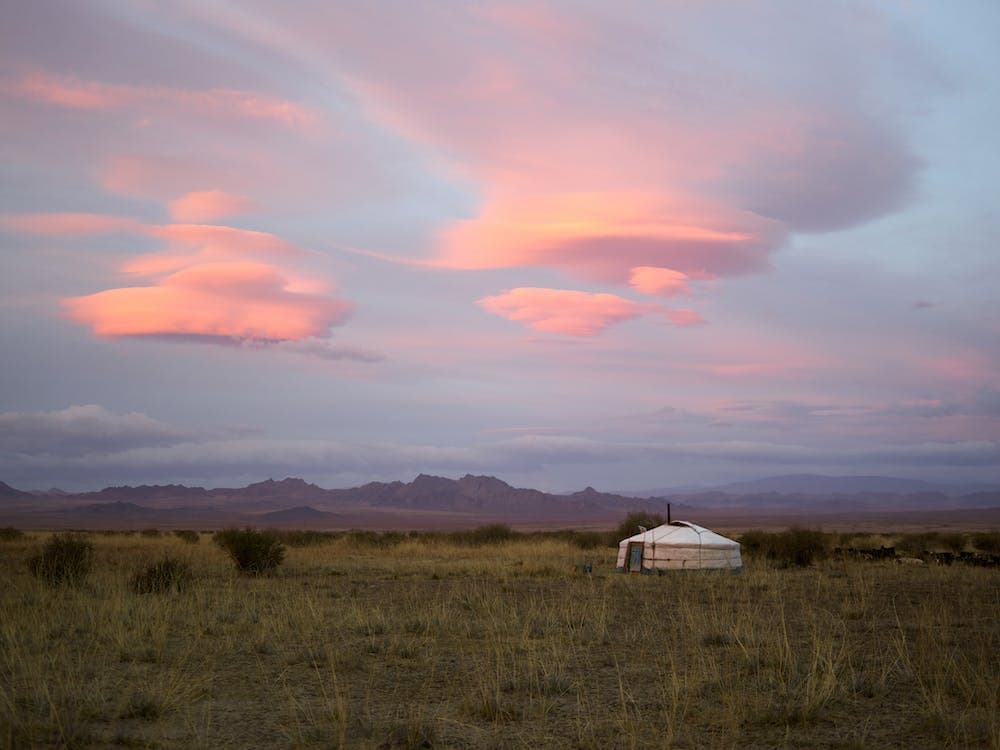Mongolian countryside
Watch VideoLiving in a ger, meaning 'home' in Mongolia, and more commonly referred to as a 'yurt' in English, has grown popular in many places worldwide. But its origin lies in central Asia, particularly across the steppes of Mongolia. Set up to be a portable home, the ger has been a traditional part of the life of nomadic herders here for millennia.
Building a Mongolian ger begins with a circular wooden frame: an assembly of lattice wall sections, a door frame, straight roof poles, and a crown held together with rope. This timber skeleton is then weighed down and draped with a thick felt cover hung from the center of the roof, typically made from the wool of the sheep or other animals that the herders graze.
This robust, warm home can be constructed in under three hours—with a finishing touch of Mongolian motifs painted on—ready to be furnished as a bedroom, living room, and kitchen for up to 15 people, depending on the yurt’s size. Once the time comes for the family to move, the ger can be dismantled into flat packs within an hour or so and carried away to be rebuilt on another site. Where home is next set up depends on the grass, wind, and water.
In the Gobi Desert—one of the harshest climates in the world, where temperatures can range between 113°F and -40°F—the ger serves as a highly functional shelter that can keep its residents warm during frigid winters and cool under the scorching summer sun, while also allowing strong spring winds to flow around it. Through generations of passed-down wisdom about their natural environment, the herders have learned to tell when, where, and how quickly to move their home and animals through such drastic seasonal changes.
